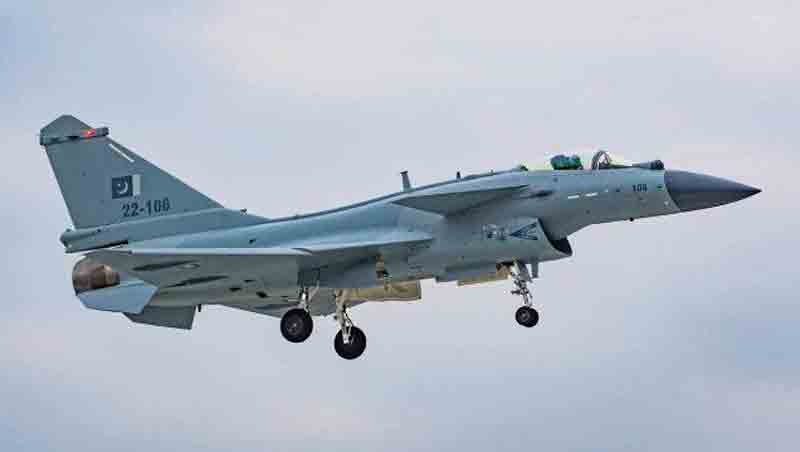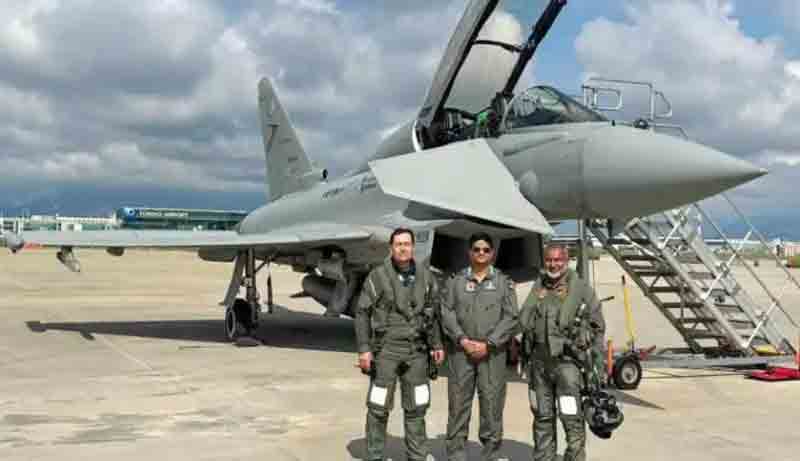In a significant development that has sent shockwaves through strategic discussions in South Asia, a prominent American aerospace expert has pointed out that Pakistan‘s effective integration of Chinese-supplied weaponry and radar systems is a key element in its recent air dominance over India.
Michael Dahm, a Senior Fellow at the Mitchell Institute for Aerospace Studies, remarked in an interview with Air & Space Forces Magazine that Pakistan’s capability to create a cohesive ‘kill chain’ in combat scenarios has become a pivotal aspect of its air warfare strategy. Dahm stated, ‘Pakistan can seamlessly integrate ground-based radars with fighter jets and airborne early warning aircraft,’ highlighting the increasing operational sophistication of the Pakistan Air Force (PAF).
He further elaborated, ‘The Pakistani Air Force executed… ‘A’ launched by ‘B’ and directed by ‘C’, successfully striking its target,’ referring to a comprehensive report from May 12 by China Space News, which is closely linked to China’s defense industry. Dahm clarified that the effectiveness of this kill chain is not merely about comparing platforms but rather about the seamless integration of each component—from sensor to shooter—into a networked, real-time engagement system. In today’s fast-paced conflict scenarios, where every millisecond can influence the outcome of a mission, the kill chain concept—encompassing the entire cycle of detection, identification, tracking, targeting, engagement, and damage assessment—has become essential to modern military operations.
The entire kill chain is now underpinned by an extensive framework of ISR (Intelligence, Surveillance, and Reconnaissance) resources, satellite communications, high-speed data networks, and increasingly autonomous fire-control systems powered by artificial intelligence.
In the context of the Pakistan-India conflict, Dahm suggests that the process likely initiated with a ground radar or air defense system identifying an Indian Air Force aircraft entering disputed airspace. This radar information was then relayed to a forward-deployed J-10C, Pakistan’s latest 4.5-generation multirole fighter obtained from China, which swiftly launched a long-range beyond-visual-range (BVR) missile at the target. The missile’s midcourse guidance was reportedly managed by an airborne early warning and control (AEW&C) platform—most likely the KJ-500—utilizing encrypted data links to refine the missile’s trajectory for optimal kill probability. “It was a long-range, Beyond Visual Range shot, likely employing the export variant PL-15E,” Dahm noted, referencing one of China’s most advanced air-to-air missile systems, now in service with both China and Pakistan.
Pakistani defense sources indicate that one J-10C is thought to have successfully shot down an Indian Air Force Rafale from a distance of 182 kilometers using a PL-15 missile—an achievement some defense analysts have labeled the longest recorded air-to-air kill in military aviation history. While independent confirmation of the kill distance is still pending, the PL-15 missile—developed by the China Airborne Missile Academy (CAMA)—has proven to be a strategic equalizer against Western counterparts like the AIM-120D AMRAAM and the European Meteor. Featuring a dual-pulse motor and an active radar seeker, the PL-15 can engage agile airborne targets at ranges exceeding 200 kilometers, firmly establishing it in the elite class of long-range BVR munitions.
The operational framework exhibited by Pakistan reflects the U.S. military’s Combined Joint All-Domain Command and Control (CJADC2) doctrine, which is an advanced warfare strategy aimed at integrating land, air, sea, space, and cyber capabilities into a cohesive decision-making network.
Dahm remarked that as more details about the specific engagement emerge, it could shed light on Pakistan’s success in systems integration, particularly in contrast to India’s more fragmented strategy. He also pointed out that Pakistan has likely adapted some of its Chinese-supplied AEW&C aircraft for specialized electronic warfare (EW) roles, although it remains uncertain if electromagnetic manipulation influenced the recent engagement.
Dahm warned against oversimplified comparisons between Chinese and Western technologies, suggesting that such comparisons may not yield significant insights. Instead, he argued that the focus should be on the systems of systems, training, and tactics—elements that are often challenging to quantify. He stressed that organizational unity and tactical doctrine frequently hold greater importance than mere technical specifications.
Additionally, Dahm noted the structural challenges faced by the Indian Air Force (IAF), which, despite having a larger number of aircraft, operates a diverse fleet with technologies from France, Russia, Israel, and domestic sources, each featuring distinct data architectures, communication protocols, and EW systems.
The IAF’s primary arsenal consists of French Rafales, Russian Su-30MKIs and MiG-29s, Anglo-French Jaguars, Indian-manufactured Tejas fighters, and Mirage 2000s, all of which feature incompatible avionics and fire-control systems. This lack of standardization hinders real-time data sharing, sensor integration, and cross-platform targeting, which are essential for an effective kill chain in contemporary air combat. Basic tactical datalinks are also non-standard, necessitating third-party integration modules for real-time communication between Russian Su-30MKIs and French Rafales, leading to delays and vulnerabilities in critical operations. The presence of varied missile systems—AIM-132 ASRAAM, R-77, Meteor, Astra—complicates logistics and targeting further, requiring distinct maintenance, storage, and command protocols.
This diversity, once seen as a safeguard against over-reliance, is increasingly becoming a structural disadvantage in a landscape where speed, automation, and interoperability are paramount. India’s air doctrine still lacks a fully digitized combat cloud framework, making it challenging to coordinate multi-platform, multi-domain operations with the same efficiency and accuracy as rivals like Pakistan or China.
In contrast, Pakistan has embraced a more cohesive and integrated approach, centering its air combat strategy around platforms primarily sourced from China and the U.S., resulting in minimal compatibility issues. The JF-17 Thunder and J-10C utilize Chinese-made AESA radars, electronic warfare systems, and datalinks that facilitate seamless information exchange with KJ-500 AEW&C platforms and ground-based radar networks. This uniformity enables Pakistan to maintain an efficient ‘sensor-to-shooter’ loop with minimal latency—detection via radar, cueing by AEW&C, and immediate engagement by fighters, all interconnected within the same electronic warfare and data-sharing framework.
This model not only enhances response times but also improves the survivability and situational awareness of frontline pilots and commanders. Systems designed in China, such as the PL-15, are seamlessly integrated into this framework, allowing for data relays, midcourse guidance, and kill assessments to occur within a unified digital environment—reducing the risk of spoofing, jamming, or data loss between platforms.
Pakistan’s commitment to a cohesive kill chain doctrine was clearly demonstrated in the recent air battle under examination, which showcased the coordinated use of ground radars, AWACS, beyond-visual-range missiles, and strategic targeting of high-value enemy assets from a distance. With China serving as both supplier and systems architect, Pakistan gains access to comprehensive military packages that include software, hardware, training, and tactical doctrine as a cohesive unit.
This approach sharply contrasts with India’s fragmented defense procurement strategy, where platforms are frequently acquired independently, leading to delays, budget overruns, and operational mismatches. In the context of fifth-generation warfare, where success relies on speed, automation, and data integration, Pakistan’s kill chain-focused model provides a significant advantage in potential future aerial conflicts in South Asia.
Discover more from Defence Talks | Defense News Hub, Military Updates, Security Insights
Subscribe to get the latest posts sent to your email.





